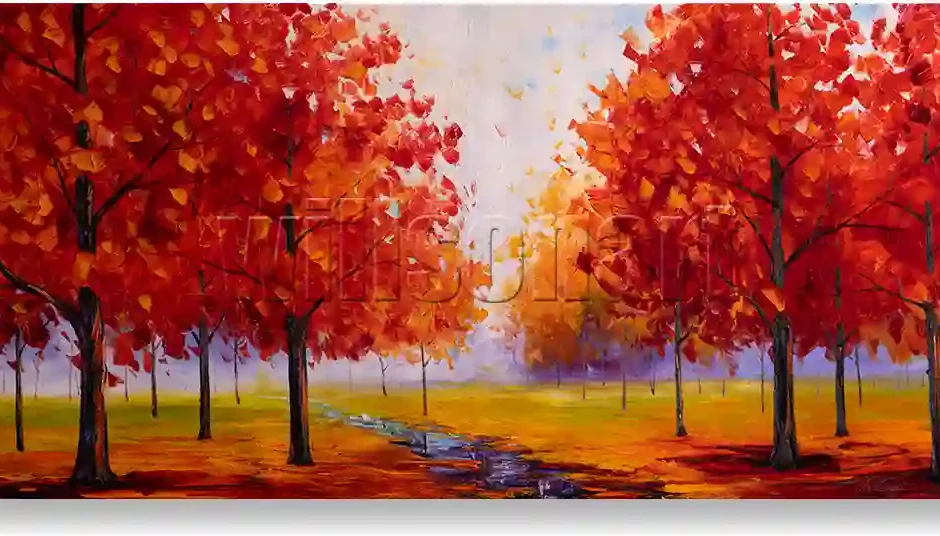Art has the extraordinary power to transcend borders and communicate the richness of diverse cultures. While oil painting has a long history rooted in various traditions, contemporary artists are increasingly drawn to the idea of incorporating diversity into their work. In this article, we’ll delve into the significance of exploring cultural influences in oil art and how artists can embrace and celebrate diversity through their creative expressions.
The Power of Cultural Diversity in Art
Cultural diversity in art enriches the creative landscape in several profound ways:
- Global Perspective: Incorporating diverse cultural influences into art allows artists to share perspectives and narratives from around the world. It fosters a deeper understanding of different cultures and promotes cross-cultural dialogue.
- Empathy and Connection: Art has the ability to evoke empathy and connect people across cultural boundaries. It can humanize the experiences of others and create a sense of shared humanity.
- Innovation: Exposure to diverse artistic traditions can spark innovation and inspire new creative directions. Artists can draw inspiration from a wide range of techniques, materials, and concepts.
- Representation: Celebrating diversity in art provides a platform for underrepresented voices and stories. It challenges stereotypes and promotes a more inclusive and equitable art world.
Ways to Incorporate Cultural Diversity into Oil Art
If you’re an oil painter interested in exploring cultural influences in your work, here are some approaches to consider:
- Research and Study: Begin by immersing yourself in the culture you wish to explore. Read books, watch documentaries, and study the art, history, and traditions of that culture. Gain a deep understanding of its aesthetics and symbolism.
- Collaboration: Collaborate with artists from different cultural backgrounds. Collaborative projects can yield exciting results, as they bring together diverse perspectives and techniques.
- Travel and Immersion: If possible, travel to the region or community you want to depict in your art. Experiencing the culture firsthand can provide invaluable insights and inspiration.
- Incorporate Symbolism: Use symbols, motifs, and iconography from the culture you’re exploring. Be mindful of the cultural significance of these symbols and use them respectfully and thoughtfully.
- Storytelling: Narratives are a powerful way to convey cultural diversity. Tell stories through your art that highlight the experiences, traditions, and challenges of different cultures.
- Color and Palette: Experiment with colors inspired by the culture you’re exploring. Different cultures have unique color palettes that can infuse your art with vibrancy and authenticity.
- Material Exploration: Consider using materials or techniques associated with the culture you’re representing. For example, try incorporating traditional textiles, ceramics, or patterns into your artwork.
Challenges and Considerations
While incorporating cultural diversity into your oil art can be a rewarding endeavor, it’s essential to approach it with sensitivity and respect. Here are some challenges and considerations to keep in mind:
- Cultural Appropriation: Be cautious of cultural appropriation, which involves taking elements from a culture without understanding or respecting their significance. Ensure that your work is culturally sensitive and does not perpetuate stereotypes or harm.
- Authenticity: Strive for authenticity in your portrayal of cultures. Authenticity can be achieved through research, consultation with individuals from the culture, and a commitment to accuracy.
- Ethical Representation: Consider the ethical implications of your art. Be aware of power dynamics, colonial histories, and the impact your work may have on the communities you’re representing.
- Consent and Collaboration: If working with individuals from the culture you’re exploring, obtain their consent and collaborate in a respectful and equitable manner.
- Avoid Stereotypes: Steer clear of cultural stereotypes or clichés. Challenge yourself to present a nuanced and multifaceted view of the culture.
Conclusion
Incorporating cultural diversity into oil art is an opportunity to celebrate the richness and complexity of our global community. It invites artists to explore new horizons, deepen their understanding of different cultures, and use their creative voices to foster unity and understanding. As artists, we have the privilege and responsibility to create work that reflects the diverse world we live in and contributes to a more inclusive and empathetic society. By embracing cultural diversity in oil art, we not only enrich our own creative journeys but also contribute to a more vibrant and interconnected artistic landscape.



